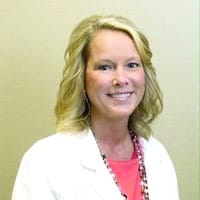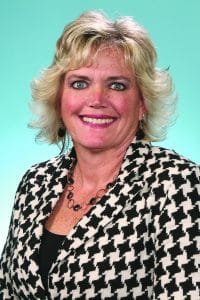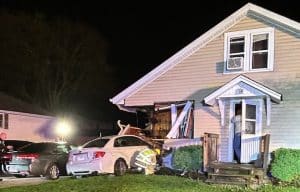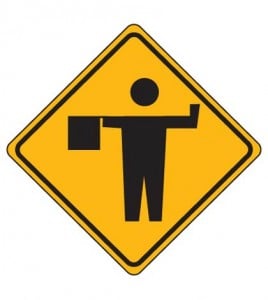Health care providers fight the good fight
Jay Pickett Marla Smith Toni Michels
For all those at essential businesses, going to work during a pandemic can be fraught with anxiety about making ends meet, staying safe and more.
That may be most true for health care providers.
“It’s very scary because none of us have ever lived through anything like this,” said Toni Michels, senior director of clinical operations for the department of medicine at Washington University.
While it may be a frightening time, this is exactly what these people signed up for.
“Everybody’s like, ‘I can’t believe you’re still going to work,’” nurse practitioner OB/GYN Marla Smith said. “But that’s why I became a health care professional. We want to help people. This is why we do what we do.”
“I feel like it’s my duty,” Dr. Jay Pickett agreed.
Michels, who lives between Waterloo and Valmeyer, also pointed out this is an even more harrowing time for those people who contract COVID-19.
“Being a physician or being a nurse, this is what we signed up for, and we know we have to be there for these patients,” Michels said. “Because at the same time it’s very scary for health care (providers), it’s even more scary for our patients because no one can be with them in the hospital.”
Across the health care industry, the coronavirus pandemic has had a variety of effects.
Everywhere is now taking enhanced precautions in the form of sanitizing, wearing personal protective equipment, using phone calls and video conferencing to provide services or screening all individuals before they enter a building.
Health care providers have also needed to adapt rapidly like everyone else to keep themselves and their patients safe.
“We developed procedures as we went along,” Smith, a Waterloo resident who works at Heartlands Women’s Health recalled.
Even with those protective measures, the health care industry has taken a financial blow from the pandemic like virtually every other sector.
Some of that is intentional, as providers limit services to help slow the spread of the virus. Some of it is from fear of going to a public place more likely to have someone with COVID-19.
“It’s definitely affected the bottom line all the way around, whether it be hospital settings or private practices,” Smith summarized. “Everybody thinks that providers are safe, as far as being furloughed, but we’re not. A lot of providers have had to reduce their hours or take a pay cut.”
While that may be difficult, health care professionals realize its necessity during the pandemic.
For those who have seen the coronavirus and its impact firsthand, that point has been reinforced even though many people who get the virus have minimal symptoms.
“A vast majority of these patients are being discharged from the hospital and are doing well,” Michels, a trained nurse who oversees goes into many clinics, explained. “There’s just that few who have it worse.”
“The difference in the coronavirus is its high communicability,” Pickett, a Waterloo resident who works at Total Access Urgent Care in Missouri, assessed. “It’s transferred from person to person so easily and so rapidly. Then there’s the unpredictable severity it can have.”
Although she mainly interacts with those who have milder forms of the virus, Michels said she has talked to those who staff the COVID-19 units at area hospitals.
Based on her conversations and experience, Michels said those who have the more serious cases usually have double pneumonia, which requires hospitalization. But even most of those people recover.
“Most people are able to be treated with oxygen,” she said. “It’s when those symptoms become very severe that we use a ventilator, and we do have quite a few people on the ventilators. But most patients have been able to come off the ventilator after a certain amount of time and are recovering.”
For those with less critical illness from the coronavirus, Michels said key indicators are fatigue levels, loss of taste and smell, low-grade temperatures and shortness of breath.
She said it has been crucial to determine those warning signs due to difficulties surrounding testing.
“With the testing being so difficult to obtain – and we don’t have a lot of testing – we are still having to screen patients and find out who has been exposed to someone who may have tested positive and have them just wear a mask and monitor them for 14 days,” Michels noted.
Similarly, Pickett said it would have been “fantastic” to have more testing earlier, describing it as “the whole key.”
“As early as January and February, we were seeing people come in with coughing and wheezing and you go ‘oh, they have the flu. There’s no doubt they have the flu,’” Pickett said. “Then we’d do flu testing and it was negative. Before all this stuff we’d just treat it as if it was flu anyway because maybe the test was falsely negative.
“Looking back, you have to wonder whether all these people already had COVID-19 and we just didn’t recognize it and couldn’t test for it.”
Pickett predicted that, once reliable antibody testing is developed, health care providers will learn “hundreds of thousands, if not millions” of people will have had the virus and developed immunity to it.
Even with limited testing, Michels said it appears few health care workers she is aware of have contracted the virus.
“We really have been very fortunate that we haven’t had many positive employee tests,” she said.
Michels also said it seems all the efforts to slow the spread of the virus in all places in this area are working.
“What we’re seeing is that we’re flattening the curve a little bit,” she said. “We were way more prepared than some of the other cities in the country just because we had some extra time to prepare.”
Measures like social distancing, closing schools and stay at home orders have also provided some unexpected benefits.
“Throughout the winter, the flu was running rampant,” Pickett said. “With the shelter at home order from the governor, the flu is now virtually nonexistent.”
“I feel like this has been good for people in the way it has slowed them down in life a little bit,” Smith added. “I feel like people are getting more family time in, eating with their children now and starting to think about what’s important in life.”
But the health care providers acknowledged these efforts have been “extremely tough” on people and businesses while reinforcing their importance.
Michels said she hopes stay at home orders are extended because she thinks “that’s the only way we’re going to continue to see a decrease in these cases.”
Regardless of if that happens, all the providers encouraged everyone to do their part.
“The key to all of this is social distancing, staying home, and staying that six feet apart,” Michels said. “The reason we’re doing so well in the St. Louis area is we started our social distancing, shut down the schools and limited that travel so far ahead of most other cities.”
Pickett also pointed out obeying those guidelines should not be too cumbersome.
“It’s not harming you to put a mask on and to prevent any potential spread,” he said. “It’s not harmful to stay six feet away in public places. Let’s participate in this as much as we can so we can get on with life.”
As governments begin planning to make that happen, Michels said experts are predicting the peak in cases as early as this week for this area. But she still promoted slowing the spread of the virus.
“Even though we’re anticipating that and we’re seeing this curve flatten a little bit, we need to continue the social distancing, staying home and wearing masks so that we don’t see that flatten start to increase again,” she stressed.









